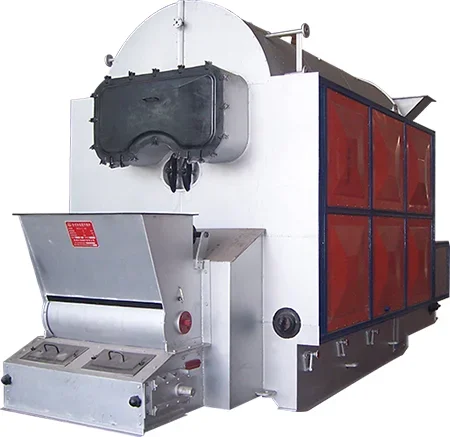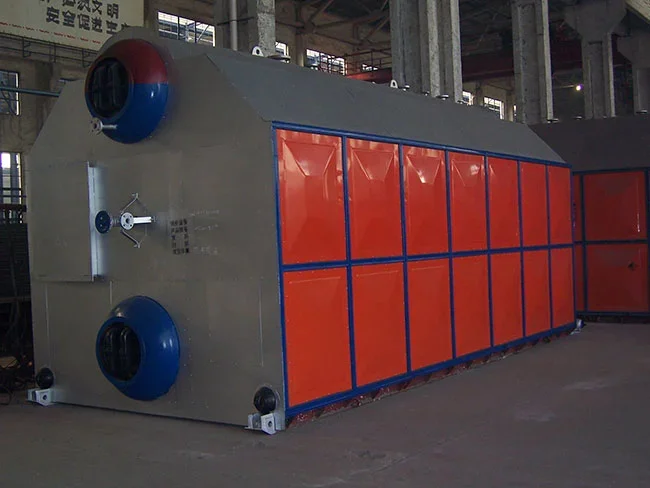Biomass, derived from organic materials such as plants, agricultural residues, and wood, has gained significant attention as a renewable energy source. With the growing concern over climate change and the need to reduce greenhouse gas emissions, biomass has emerged as a viable alternative to fossil fuels. Biomass fired boilers play a crucial role in harnessing the power of biomass and converting it into heat and electricity. This article explores the various aspects of biomass fired boilers, their benefits, challenges, and their role in the transition towards a sustainable energy future.
Understanding Biomass
Definition and Types of Biomass:
Biomass refers to any organic matter that can be used as fuel. It includes a wide range of materials such as wood, agricultural residues, dedicated energy crops, and organic waste. Biomass can be classified into three main types: woody biomass, herbaceous biomass, and aquatic biomass. Each type has its unique characteristics and applications.
Advantages of Biomass:
Biomass offers several advantages over conventional fossil fuels. Firstly, it is a renewable energy source as it can be replenished through natural processes. Secondly, biomass combustion releases carbon dioxide (CO2), but the amount emitted is equivalent to the CO2 absorbed during the growth of the biomass, making it carbon neutral. Additionally, biomass can be locally sourced, reducing dependence on imported fuels and promoting regional economic development.

Biomass Fired Boilers: Working Principles
Combustion Process:
Biomass fired boilers utilize the energy stored in biomass by converting it into heat through combustion. The combustion process involves the controlled burning of biomass in the presence of oxygen, resulting in the release of heat energy. This heat is then transferred to a working fluid, typically water or steam, which can be used for various applications, including heating, electricity generation, and industrial processes.
Boiler Components:
A biomass fired boiler consists of several key components. The fuel storage system stores biomass fuel, ensuring a continuous supply for combustion. The fuel delivery system transports the biomass fuel from the storage to the combustion chamber. The combustion chamber is where the biomass is burned, and heat is generated. The heat exchanger transfers the heat from the combustion chamber to the working fluid. Finally, the flue gas cleaning system removes any pollutants from the combustion process before releasing the flue gases into the atmosphere.
Advantages of Biomass Fired Boilers
Renewable and Sustainable Energy Source:
Biomass fired boilers utilize organic materials that can be replenished through natural processes, making them a renewable and sustainable energy source. Unlike fossil fuels, which are finite and contribute to climate change, biomass is readily available and can help reduce greenhouse gas emissions.
Carbon Neutral:
The combustion of biomass releases carbon dioxide, but the amount emitted is equivalent to the CO2 absorbed during the growth of the biomass. This makes biomass fired boilers carbon neutral, as the carbon cycle remains balanced.
Local Economic Development:
Biomass can be sourced locally, reducing dependence on imported fuels and promoting regional economic development. Local biomass resources, such as agricultural residues and wood waste, can be utilized, creating jobs and supporting local industries.
Versatility and Flexibility:
Biomass fired boilers can be used for various applications, including heating, electricity generation, and industrial processes. They offer versatility and flexibility, allowing for the utilization of different types of biomass and meeting diverse energy needs.

Challenges and Limitations
Fuel Availability and Logistics:
One of the key challenges in biomass utilization is ensuring a consistent and reliable supply of biomass fuel. Biomass availability can vary depending on factors such as seasonality, crop yields, and land use. Additionally, the logistics of collecting, storing, and transporting biomass can be complex and costly.
Combustion Efficiency and Emissions:
Achieving high combustion efficiency and minimizing emissions is crucial for biomass fired boilers. Factors such as fuel quality, combustion technology, and boiler design can impact the efficiency and emissions performance. Proper maintenance and regular cleaning of the boiler are also essential to ensure optimal performance.
Role of Biomass Fired Boilers in a Sustainable Energy Future
Biomass fired boilers play a crucial role in the transition towards a sustainable energy future. They offer a renewable and carbon-neutral alternative to fossil fuels, reducing greenhouse gas emissions and mitigating climate change. Biomass fired boilers can be integrated into existing energy systems, providing heat and electricity for residential, commercial, and industrial applications. Furthermore, the utilization of local biomass resources promotes regional economic development and reduces dependence on imported fuels.

Conclusion
The utilization of biomass fired boilers plays a crucial role in harnessing the power of biomass. These boilers offer a sustainable and renewable energy solution, reducing our reliance on fossil fuels and mitigating the negative impacts of climate change. By efficiently converting biomass into heat and electricity, we can not only meet our energy needs but also contribute to a cleaner and greener future. With ongoing advancements in technology and increasing awareness of the benefits of biomass, it is essential to continue investing in and promoting the use of biomass fired boilers. Together, we can unlock the full potential of biomass and pave the way for a more sustainable and environmentally friendly energy landscape.